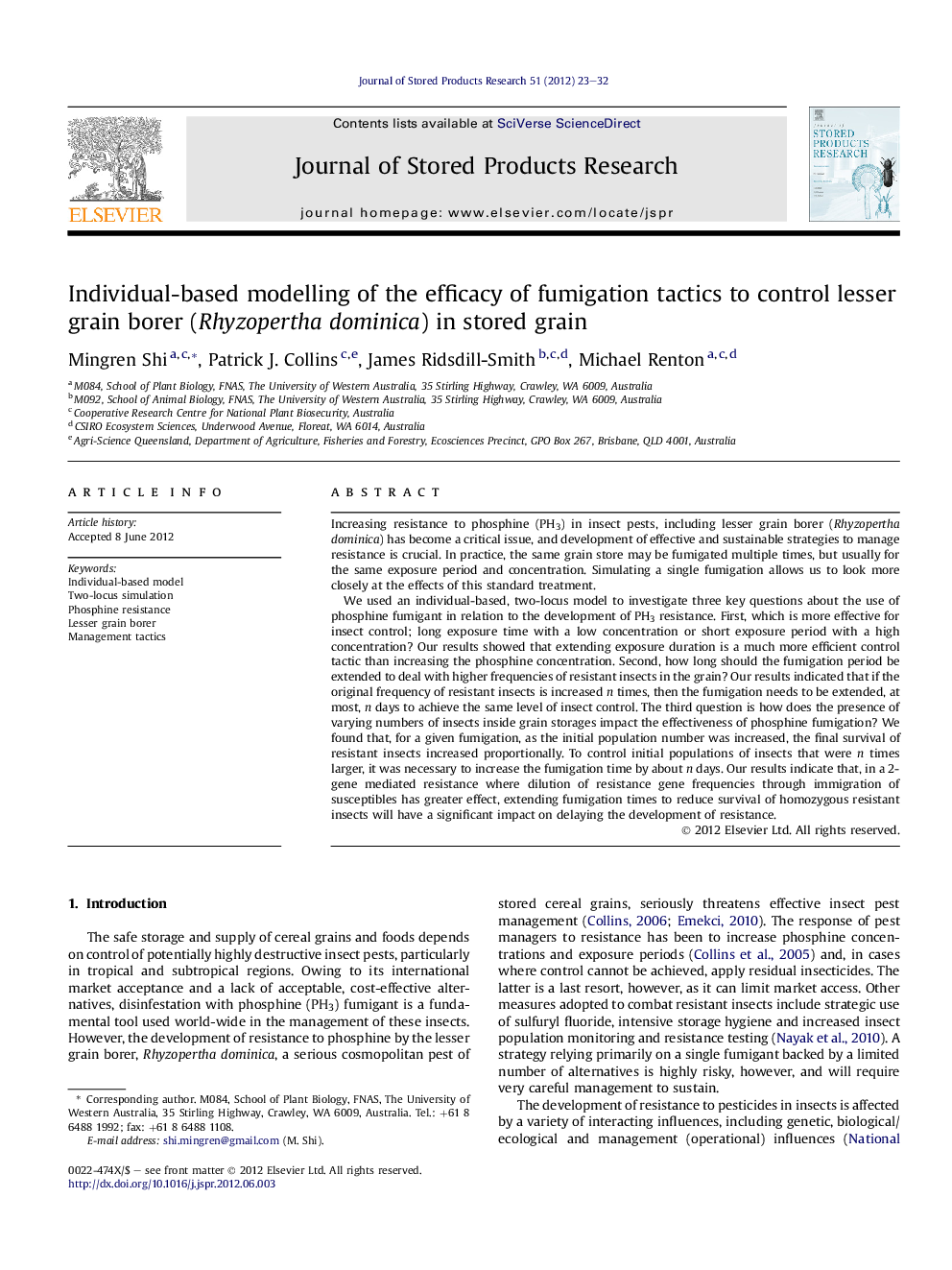| Article ID | Journal | Published Year | Pages | File Type |
|---|---|---|---|---|
| 4517160 | Journal of Stored Products Research | 2012 | 10 Pages |
Increasing resistance to phosphine (PH3) in insect pests, including lesser grain borer (Rhyzopertha dominica) has become a critical issue, and development of effective and sustainable strategies to manage resistance is crucial. In practice, the same grain store may be fumigated multiple times, but usually for the same exposure period and concentration. Simulating a single fumigation allows us to look more closely at the effects of this standard treatment.We used an individual-based, two-locus model to investigate three key questions about the use of phosphine fumigant in relation to the development of PH3 resistance. First, which is more effective for insect control; long exposure time with a low concentration or short exposure period with a high concentration? Our results showed that extending exposure duration is a much more efficient control tactic than increasing the phosphine concentration. Second, how long should the fumigation period be extended to deal with higher frequencies of resistant insects in the grain? Our results indicated that if the original frequency of resistant insects is increased n times, then the fumigation needs to be extended, at most, n days to achieve the same level of insect control. The third question is how does the presence of varying numbers of insects inside grain storages impact the effectiveness of phosphine fumigation? We found that, for a given fumigation, as the initial population number was increased, the final survival of resistant insects increased proportionally. To control initial populations of insects that were n times larger, it was necessary to increase the fumigation time by about n days. Our results indicate that, in a 2-gene mediated resistance where dilution of resistance gene frequencies through immigration of susceptibles has greater effect, extending fumigation times to reduce survival of homozygous resistant insects will have a significant impact on delaying the development of resistance.
► This study uses cutting-edge two-locus individual-based models based on accurate mortality data. ► Extending fumigation time is a more efficient control tactic than increasing the concentration. ► More resistant populations can be controlled by relatively small extension of fumigation time. ► Larger populations can also be controlled by relatively small extension of fumigation time.
